Roman Art
1/21
There's no tags or description
Looks like no tags are added yet.
Name | Mastery | Learn | Test | Matching | Spaced |
|---|
No study sessions yet.
22 Terms

Origins: Etruscans
an ancient civilization in Italy, known for their sophisticated culture and powerful maritime influence
Influenced early Roman religion, art, and urban planning.
Skilled in bronze work (e.g., Capitoline She-Wolf).
Used arches before Romans adopted and refined them.
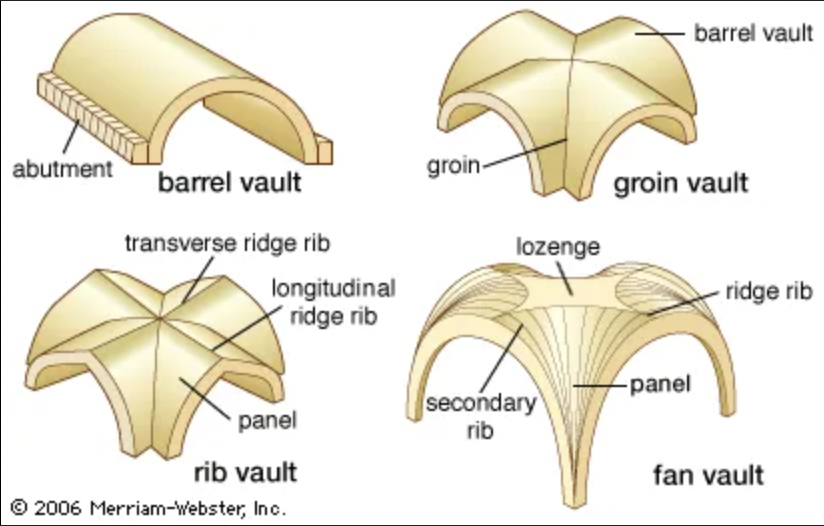
Architecture: Vaults
Barrel Vault
Long, continuous arch forming a tunnel-like ceiling.
Used in baths, basilicas, and corridors.
Groin Vault
Intersects two barrel vaults at right angles.
Allowed for open, flexible interior space (e.g., markets, basilicas).
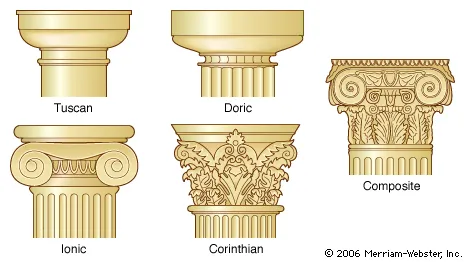
Greek Orders Adapted: Tuscan & Composite Orders
Tuscan: Simplified Doric (no fluting, plain base), used in temples and military buildings.
Composite: Combines Ionic volutes and Corinthian acanthus, very ornate, imperial contexts.

Aquaduct: Pont du Gard
Aqueduct + bridge
Uses multiple arcades: a series of arches supported by columns
Roman engineering
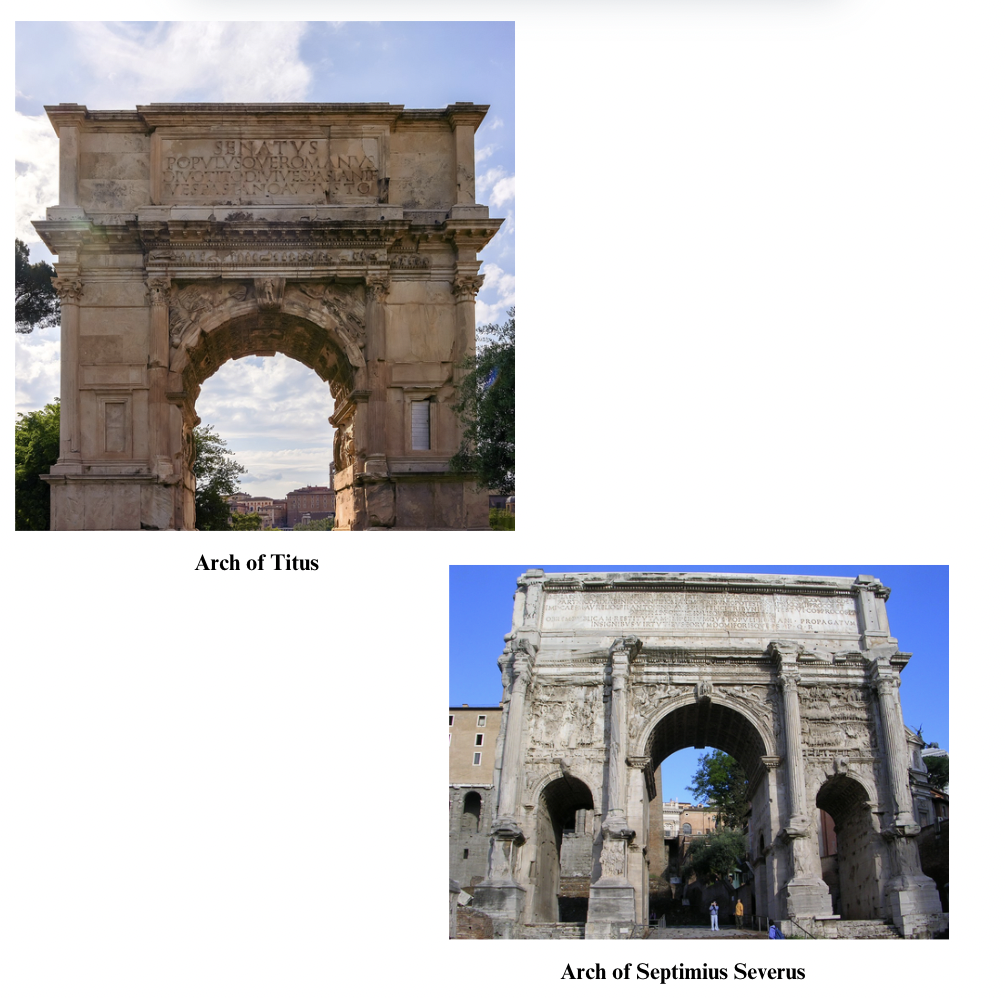
Triumphal Arches
Arch of Titus: Commemorates Roman victory in Judea.
Arch of Septimius Severus: Victory over Parthians; elaborate sculptural relief.
Symbolic of imperial propaganda
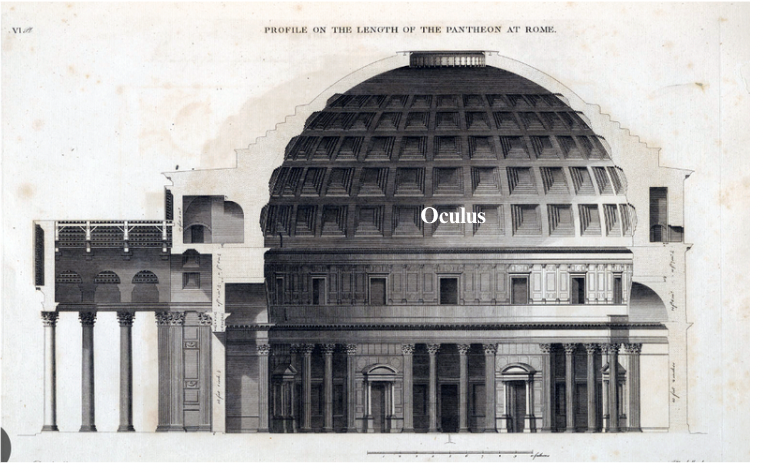
The Dome: Pantheon
Temple to all gods, revolutionary dome.
Largest unreinforced concrete dome
Oculus (central opening) brings light and symbolizes heaven.
Combines Traditional Greek exterior with Roman engineering innovation.
Roman Concrete: allowed for durable, architectural freedom, large-scale structures. Concrete dome.
Pompeii and Its Characteristics
Ancient Roman city
Offers exceptional preservation of Roman daily life, art, and architecture
Grid street plan introduced
Provides insight into Roman urban design and domestic life
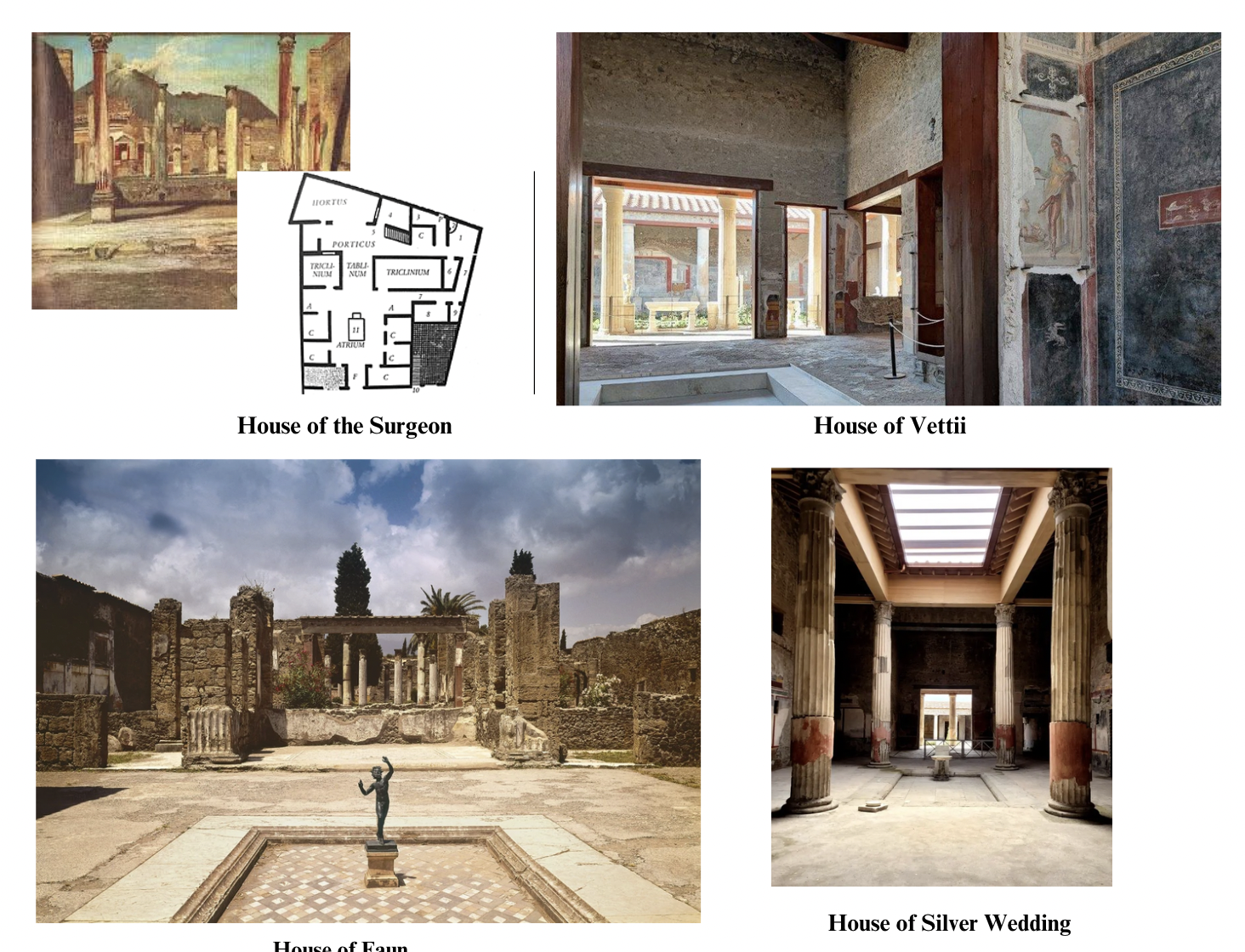
Domestic Buildings (1): The Domus
Type of house occupied by the higher classes
Two types:
Domus Italica - House of the Surgeon
Traditional Roman townhouse with central atrium, compluvium (roof opening), and tablinum
Hellenized Domus -
House of the Vettii (Decorative, frescoes)
House of the Silver Wedding (symmetry)
House of the Faun (largest, famous mosaics and sculpture)
Combines Italic plan with Greek features like peristyle courtyards and elaborate decoration
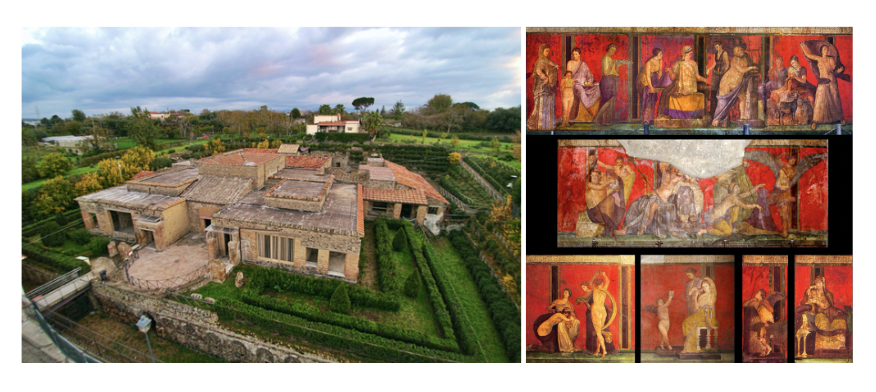
Domestic Buildings (2): The Villa
Roman country homes, often for elite or agriculture
Two types:
Villa urbana: near city, luxury retreat
Villa rustica: working estate with staff
Villa of the Mysteries
Known for the Dionysiac frieze (Second Style wall painting)
Combines domestic, spiritual, and ceremonial functions
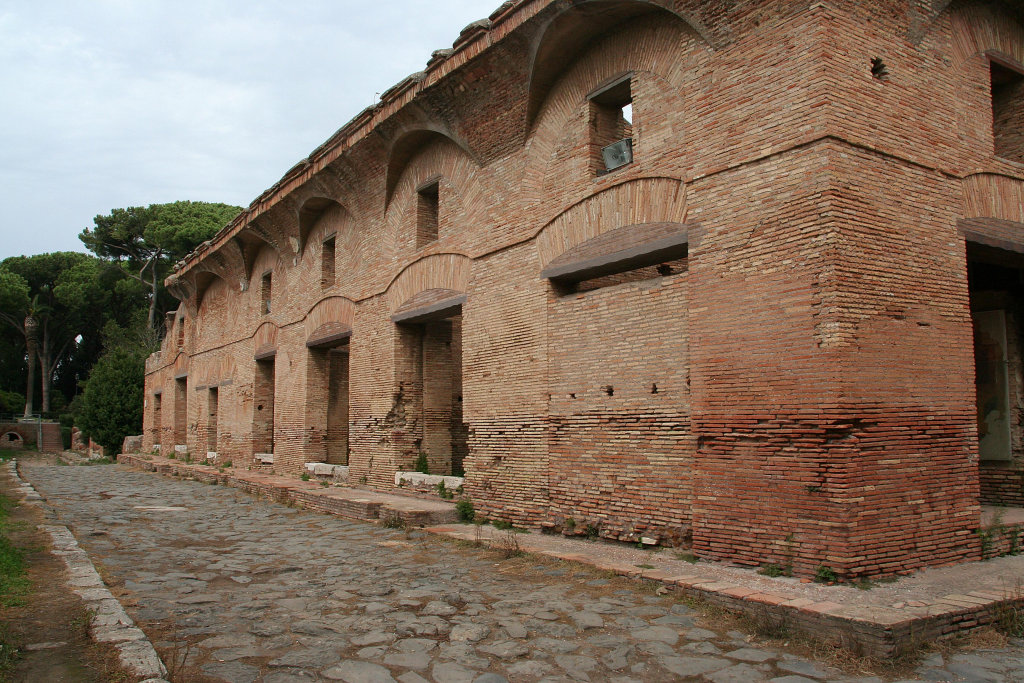
Domestic Buildings (3): The Insula
Urban apartment blocks for middle/lower-class Romans
Often multi-story, with shops on ground level
Insula of Diana
Courtyard-centered, communal living
Offers contrast to elite domus and villas

Mosaics and Sculpture in Homes
House of the Faun
Dancing Faun: bronze statue in atrium, celebrates leisure and Greek influence
Alexander Mosaic: large floor mosaic, shows Battle of Issus; based on Hellenistic painting
realism, movement, dramatic narrative
Cave Canem Mosaic
"Beware of the dog" mosaic in House of the Tragic Poet
functional decoration
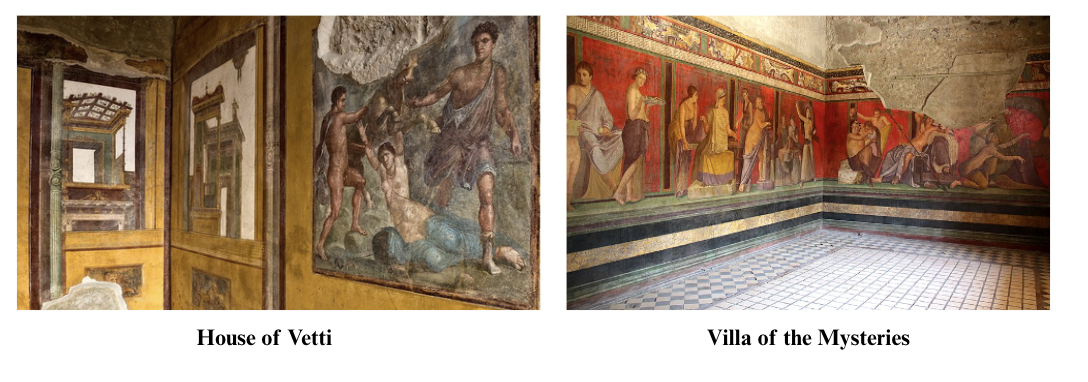
Roman Wall Painting: First Style – Incrustation Style
Mimics colored marble panels using tecnique stucco relief: a decorative plaster technique that creates a three-dimensional effect on walls
Examples:
House of the Vettii, Pompeii
Villa of the Mysteries, faux-marble walls
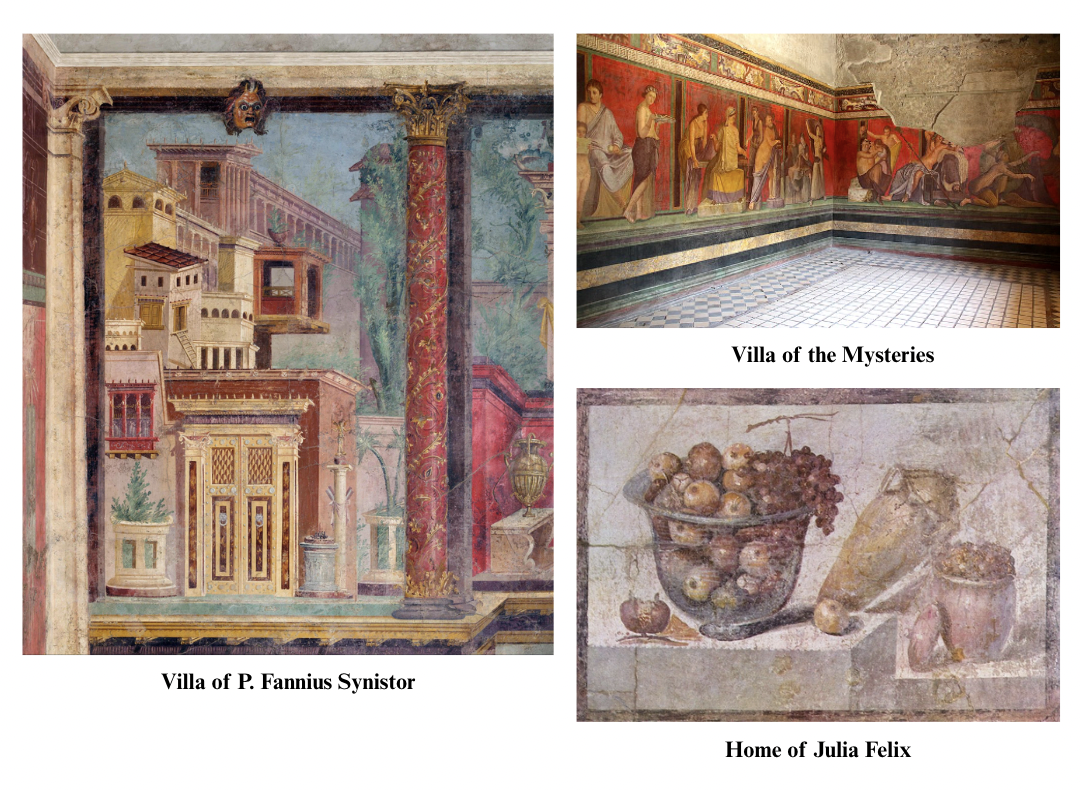
Roman Wall Painting: Second Style – Architectural Style
Uses illusionistic architecture, linear perspective to open space
Villa of P. Fannius Synistor, Boscoreale: painted columns, landscape views
Home of Julia Felix still life scenes
Villa of the Mysteries: Dionysiac frieze, life-size figures
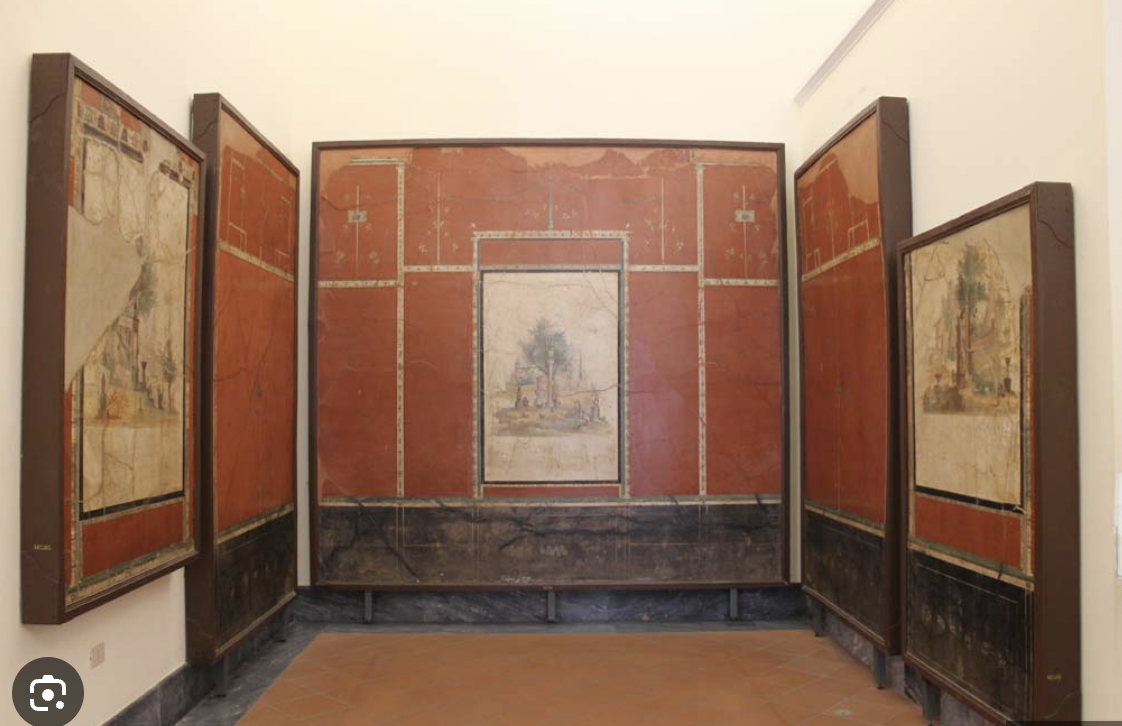
Third Style – Ornate Style
Flat, monochrome backgrounds with delicate decorative elements
Central miniature scenes framed like artworks
Villa of Agrippa Postumus delicate candelabra, mythological panels

Fourth Style – Composite/Fantastic Style
Combines elements of previous styles: illusionism + flatness + ornament
Often features mythological scenes, framed panels, and elaborate decoration
House of the Vettii
highly ornate, full of fantasy architecture and framed paintings
Roman Forum and Its Characteristics
Center of Roman public life
Open plaza surrounded by temples, basilicas, arches, and government buildings
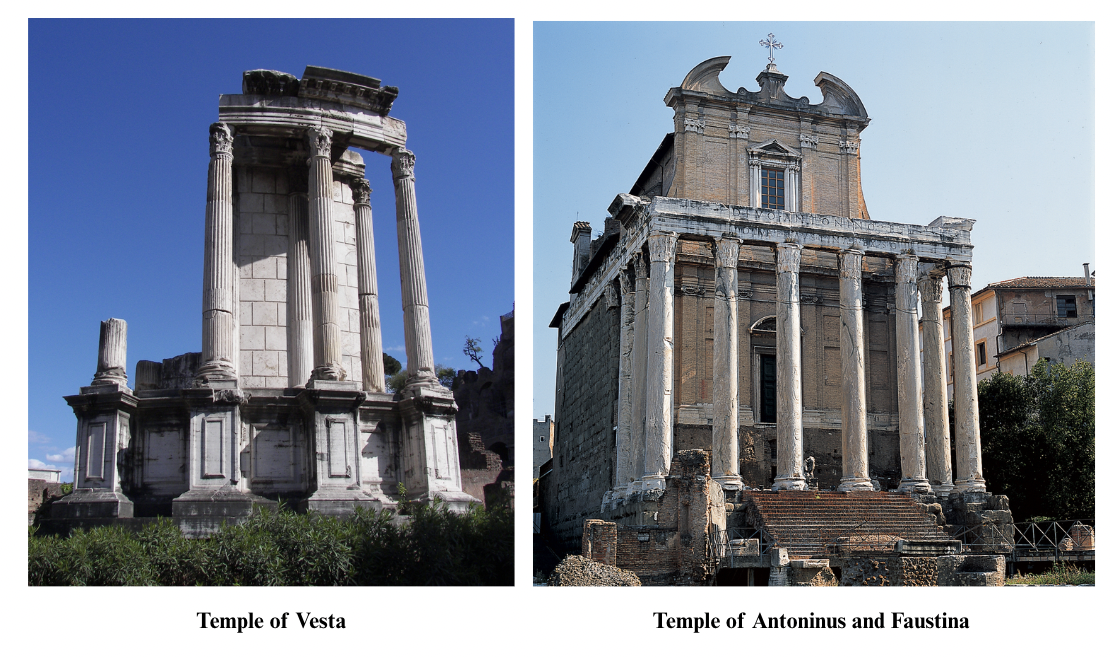
Temples
Temple of Vesta: Round plan, symbolic eternal flame
Temple of Antoninus and Faustina: Dedicated to a deified emperor and his wife; shows imperial cult integration
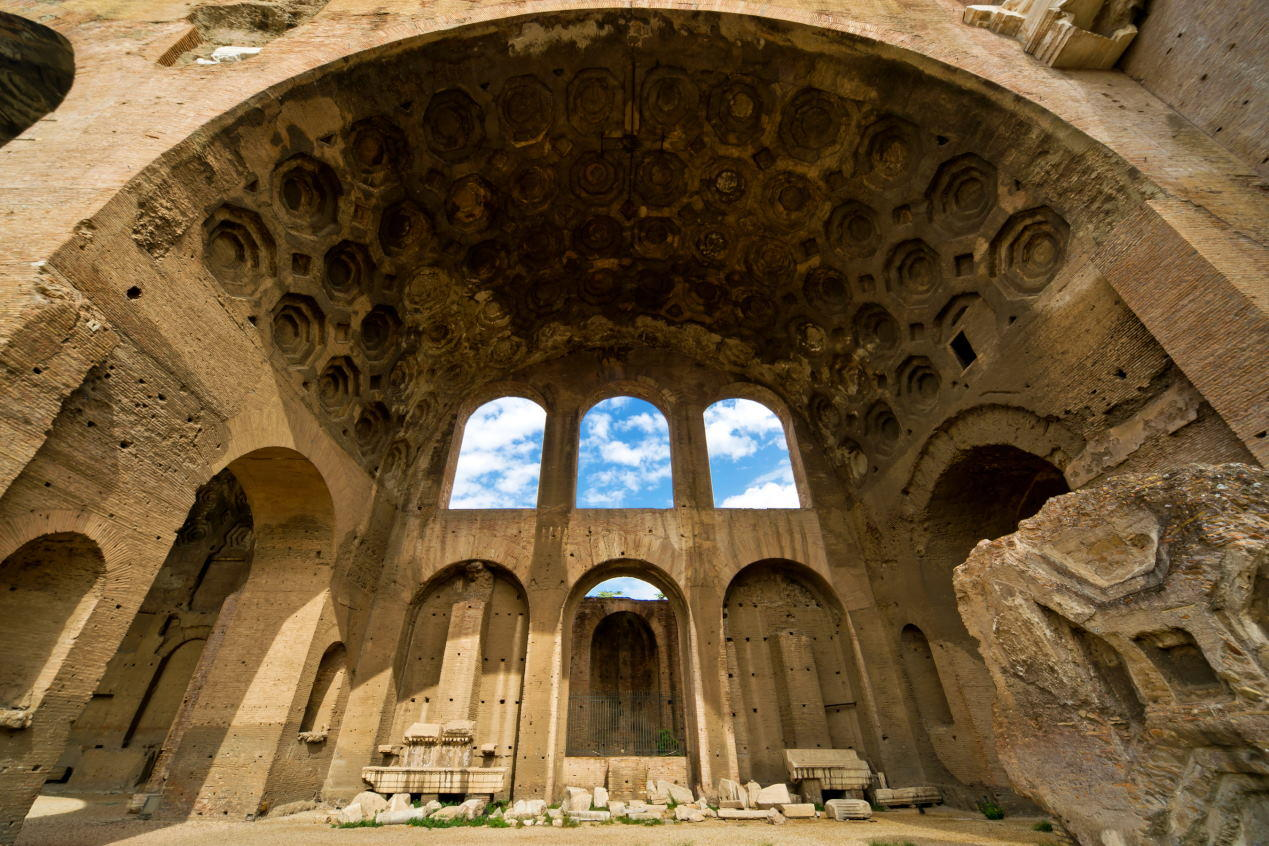
Basilicas
Large public buildings for law, business, and civic use
Basilica of Maxentius and Constantine: Monumental scale; concrete vaulting; transitional to Christian church design
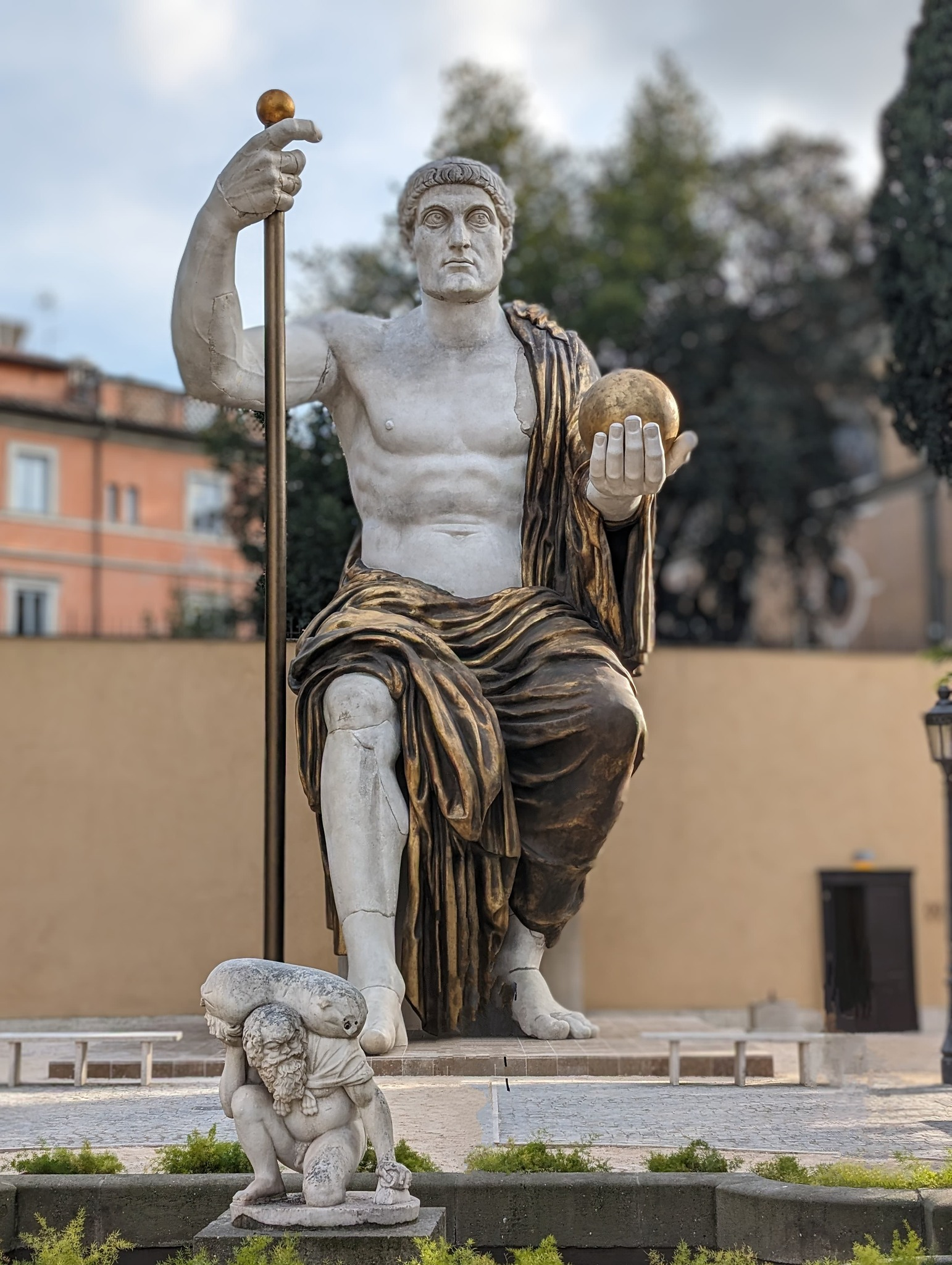
Sculpture
Colossus of Constantine: Giant seated statu, symbolic of emperor’s power; located in basilica
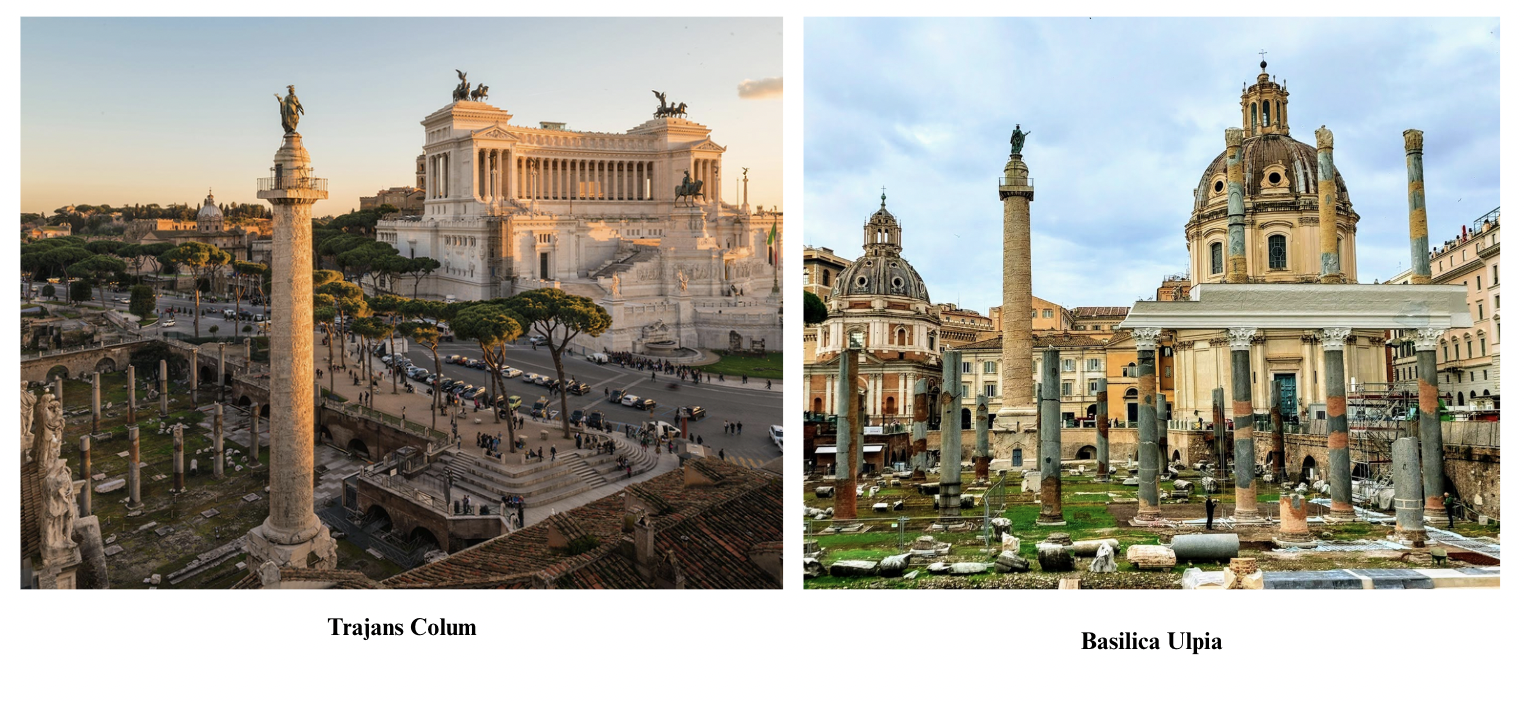
Trajan’s Forum and Its Characteristics
Grandest imperial forum; symbol of Roman power and conquest
Included Basilica Ulpia, Trajan’s Column, libraries, and a market
Celebrated victory over Dacians
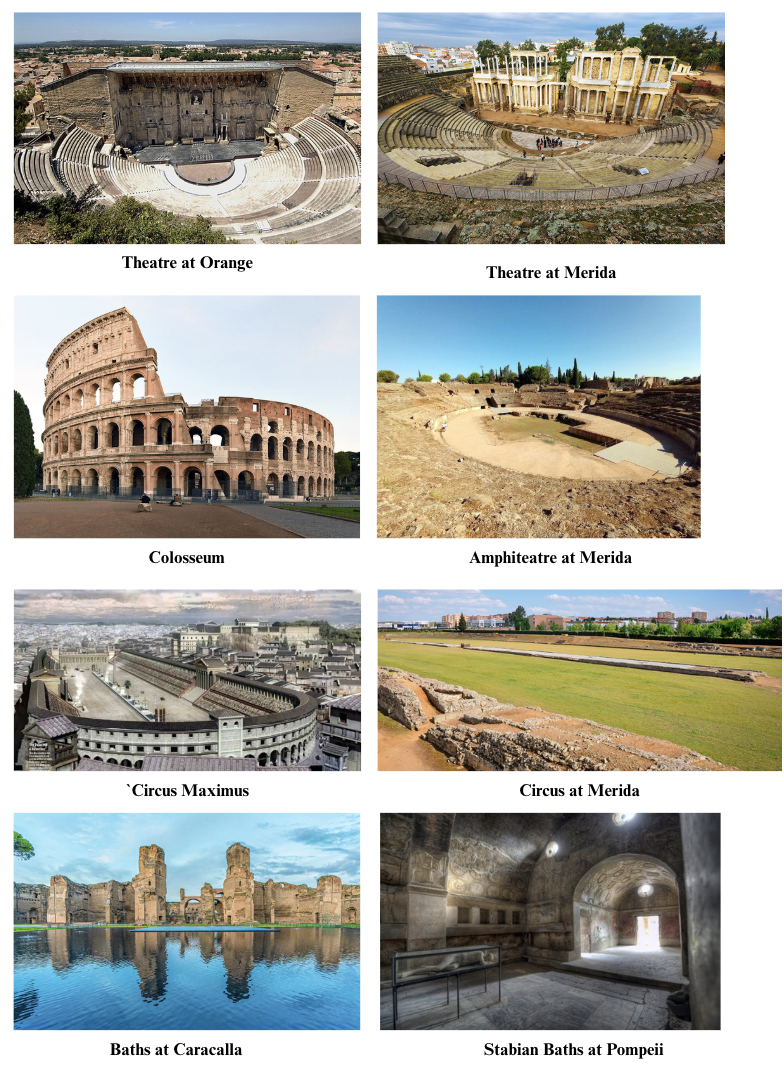
Buildings
Theatres
Semicircular seating, orchestra, and raised stage building (eg. Theatre at Orange; Theatre at Mérida)
Amphitheatres
Oval arenas for gladiator games, hunts, and public spectacles (eg. Amphitheatre at Mérida; Colosseum)
Circuses
Long, rectangular arenas with central spine for chariot races. Massive spectator capacity.
eg. Circus Maximus; Circus at Mérida
Baths
Daily public social life, with hot (caldarium), warm (tepidarium), and cold (frigidarium) rooms
Included gyms, libraries, gardens
eg. Baths of Caracalla, Stabian baths at Pompeii
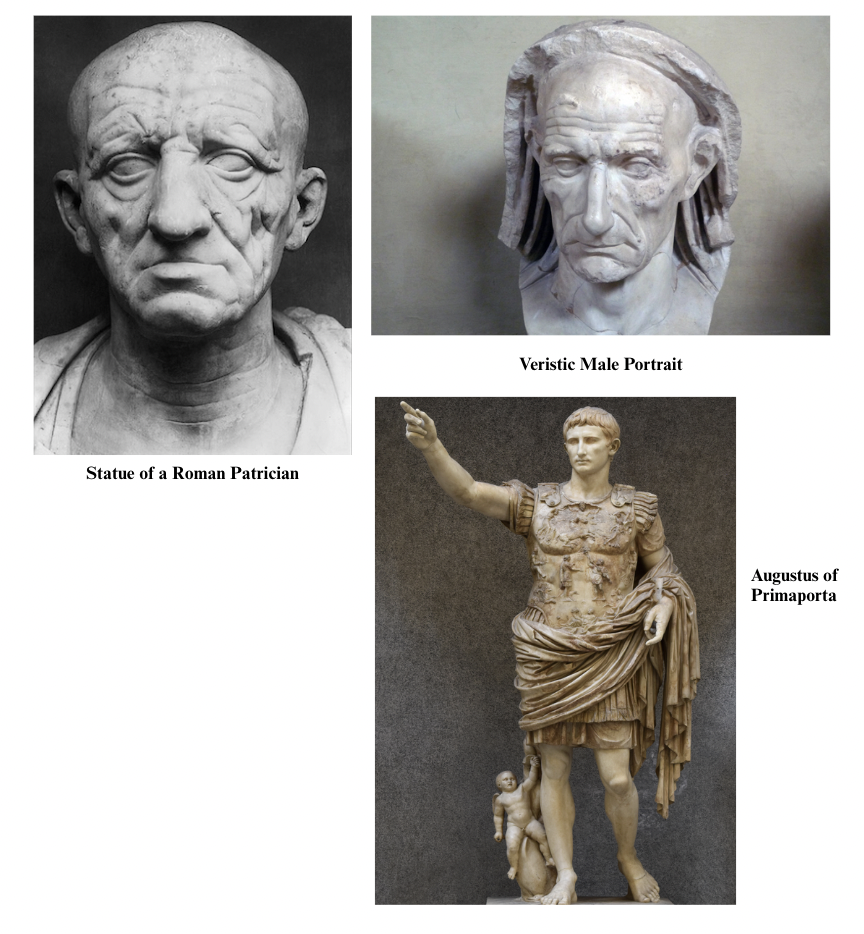
Portrait Sculpture: Characteristics
Emphasized individual identity, age, status, and political messaging
Key Examples:
Statue of a Roman Patrician: Draped toga, veristic realism, conveys wisdom and age
Veristic Male Portrait: Hyper-realistic; wrinkles, age, gravitas—Republican ideal of civic virtue
Augustus of Primaporta:
Idealized yet political; youthful, divine lineage (Cupid & dolphin)
Combines Classical Greek style with imperial propaganda